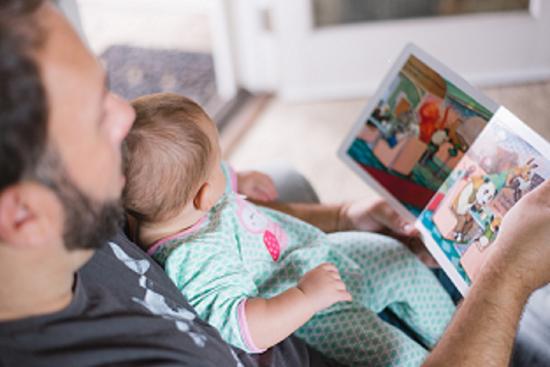7.1: Welcoming Spaces
- Page ID
- 139718
Creating a Welcoming Space
Families will feel more supported and included if there are spaces designed with them in mind in your program. Many programs like to have a couch or bench or welcome area with adult furniture where the adult is able to transition from home to school with their child. Including pictures of the families in the classroom shows that the program encourages family engagement and understands the need for the child to have a connection to home when away for so many hours a day. Creating a community in a classroom where families can meet and interact with each other will also make families feel more comfortable with their child spending time away from them and in an early childhood education program. Family nights, ice cream socials, art fundraisers, child led plays, and open house nights are all great ways to open the classroom to families. What other ways can you think of to engage families in your program?

Programs
Design what you think would be the perfect classroom that would be welcoming to children, teachers and families
Programs Regularly Provide Family Members with Information about Their Children’s Learning and Development, Well-Being, And Everyday Experiences
A key to building successful partnerships with parents is to make them true partners by sharing with them the same kinds of educational information and ideas that are important to the teacher and staff. In a high-quality program, there is ongoing communication between the home and the early care and education center. As much as possible, families and teachers support each other in the development of the child.
Family practices in the home are also important for young dual language learners to learn, practice, and reinforce concepts in their home language that were initially introduced in school, such as literacy-building skills. Recent research suggests the use of families’ home language is a protective factor for children of immigrant families. When some amount of the family’s native language is used regularly in the home, young dual language learners show improved cognitive and social development. Thus, it is important for preschool programs to encourage learning at home in dual language learners’ home languages. This may be particularly beneficial in the realm of reading and literacy-building skills.
Although monolingual speakers (those that only speak one language) often do not realize it, the majority of children around the world are bilingual, (they understand and use two languages). (Meyers- Sutton, 2005). Even in the United States, which is a relatively monolingual society, more than 47 million people speak a language other than English at home, and about 10 million of these people are children or youth in public schools (United States Department of Commerce, 2003). The large majority of bilingual students (75%) are Hispanic, but the rest represent more than a hundred different language groups from around the world. In larger communities throughout the United States, it is therefore common for a single classroom to contain students from several language backgrounds at once. In classrooms, as in other social settings, bilingualism exists in different forms and degrees.
Information about Learning
Programs
- Offer regular workshops for adult family members that family members helped to design and implement.
- Provide resources for educating the children’s family members in various media (print, audio, video) and in the home languages of the families served by the early care and education setting, if appropriate to do so.
- Provide current information about the role of the family in maintaining home language skills.
Teachers
- Inform parents regularly about the purpose and benefits of the activities in the program for their children.
- Provide information regularly to families with dual language learners about the benefits of developing both of the child’s languages and promoting bilingualism
[1] Photo by Picsea on Unsplash
[2]: Martha Lally and Suzanne Valentine-French. Provided by: College of Lake County Foundation. Located at: http://dept.clcillinois.edu/psy/LifespanDevelopment.pdf. License: CC BY-NC-SA: Attribution-NonCommercial-ShareAlike


